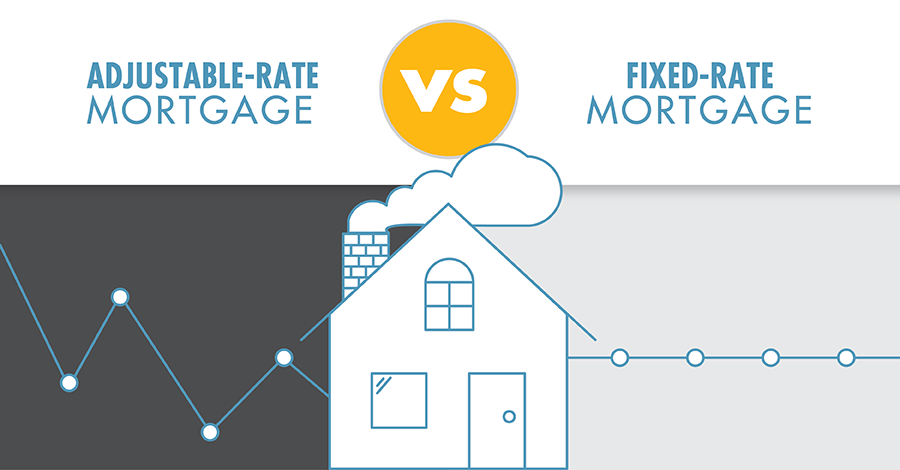Purchasing a home is a milestone that involves a series of important decisions. Among these decisions is selecting the right type of mortgage loan. Two common options are fixed-rate mortgages and adjustable-rate mortgages. Both have their unique benefits and drawbacks. This article aims to provide an in-depth comparison to help prospective homeowners make an informed decision.
Understanding Fixed-Rate Mortgages
A fixed-rate mortgage is a type of home loan where the interest rate remains constant throughout the life of the loan. This means your monthly payments for principal and interest will not change over time. These mortgages are typically offered in terms of 15, 20, or 30 years.
Pros of Fixed-Rate Mortgages
1. Predictability: With a fixed-rate mortgage, you’ll know exactly what your mortgage payments will be every month. This can make budgeting easier and provide a sense of financial stability.
2. Protection from Interest Rate Increases: If interest rates rise, your mortgage rate remains the same. This can save you a significant amount of money in the long run.
3. Simplicity: Fixed-rate mortgages are easier to understand compared to adjustable-rate mortgages. There are no surprises or complexities associated with fluctuating rates.
Cons of Fixed-Rate Mortgages
1. Higher Initial Rates: Fixed-rate mortgages typically start with higher interest rates compared to adjustable-rate mortgages. This means your payments might initially be higher.
2. Less Flexibility: If interest rates fall, you are locked into your original rate unless you refinance, which can come with additional costs.
3. Long-Term Commitment: Being locked into a higher rate could be disadvantageous if you plan to move or refinance in the near future.
Understanding Adjustable-Rate Mortgages
An adjustable-rate mortgage (ARM) has an interest rate that can change periodically based on the performance of a specific benchmark. ARMs typically start with a lower interest rate compared to fixed-rate mortgages. However, this initial rate is only fixed for a certain period, usually 5, 7, or 10 years. After this period, the rate can adjust annually based on market conditions.
Pros of Adjustable-Rate Mortgages
1. Lower Initial Rates: ARMs often have lower initial rates compared to fixed-rate mortgages, which can make your initial payments more affordable.
2. Potential for Decreasing Rates: If interest rates decrease, your mortgage rate and monthly payments can also decrease.
3. Short-Term Savings: If you plan to sell or refinance before the adjustable period begins, you can take advantage of the lower initial rate without facing the risk of rate increases.
Cons of Adjustable-Rate Mortgages
1. Uncertainty: After the initial fixed period, your interest rate and monthly payments can increase. This can make budgeting more challenging.
2. Complexity: ARMs come with more terms and conditions, making them more difficult to understand compared to fixed-rate mortgages.
3. Potential for Higher Long-Term Costs: If interest rates rise significantly, you could end up paying much more over the life of the loan compared to a fixed-rate mortgage.
Comparing Fixed-Rate and Adjustable-Rate Mortgages
When deciding between a fixed-rate mortgage and an adjustable-rate mortgage, consider the following factors:
1. Duration of Stay
– Short-Term: If you plan to move or refinance within a few years, an adjustable-rate mortgage might be more beneficial because of the lower initial rate.
– Long-Term: If you plan to stay in your home for a long time, a fixed-rate mortgage might be better to ensure consistent payments.
2. Risk Tolerance
– Low Risk: If you prefer financial predictability and stability, a fixed-rate mortgage is likely the best choice.
– High Risk: If you are comfortable with potential fluctuations in your monthly payments and the possibility of higher future rates, an adjustable-rate mortgage could be suitable.
3. Current Interest Rates
– High Rates: If current interest rates are high, starting with a lower ARM rate with the intention to refinance later could be advantageous.
– Low Rates: If interest rates are low, locking in a fixed-rate mortgage can be beneficial to secure the low rate for the life of the loan.
Conclusion
Both fixed-rate mortgages and adjustable-rate mortgages offer distinct advantages and disadvantages. The right choice depends on individual circumstances, including how long you plan to stay in your home, your financial stability, and your tolerance for risk. Fixed-rate mortgages provide stability and predictability, making them ideal for long-term homeowners who favor financial security. Conversely, adjustable-rate mortgages can offer short-term savings and lower initial payments, appealing to those who plan to move or refinance within a few years.
Before making a decision, it’s essential to thoroughly evaluate your financial situation and goals, consult with mortgage professionals, and consider the current interest rate environment. By doing so, you can select the mortgage loan that aligns best with your needs and provides the foundation for a stable and secure homeownership experience.
